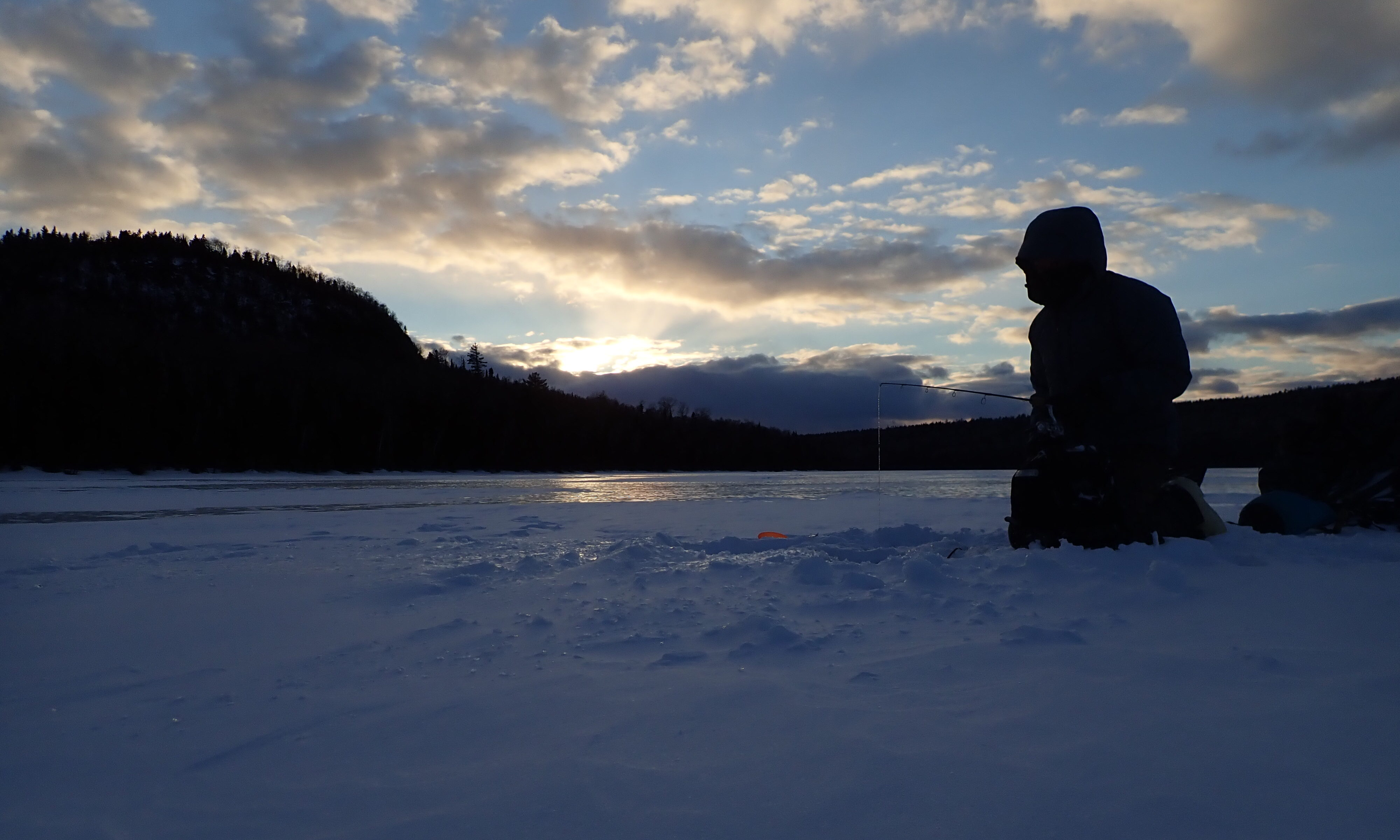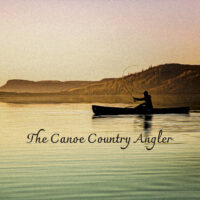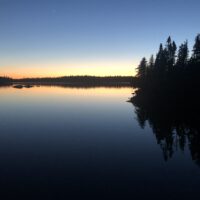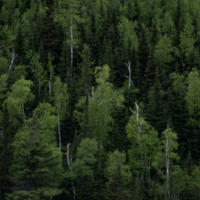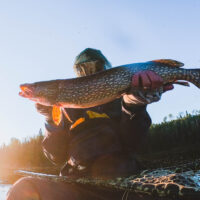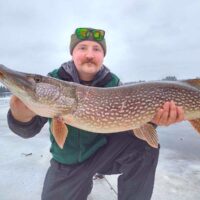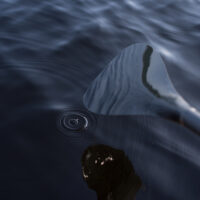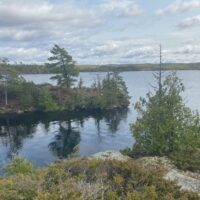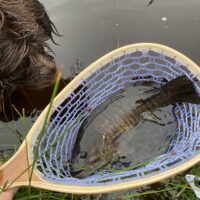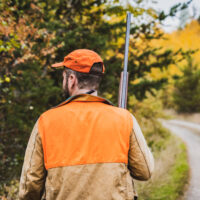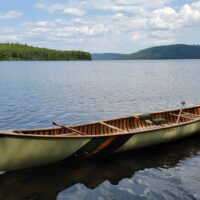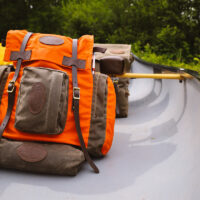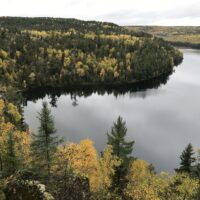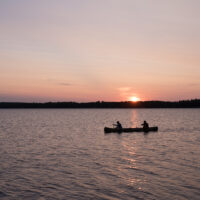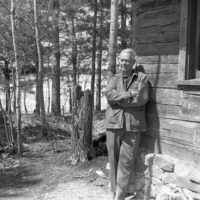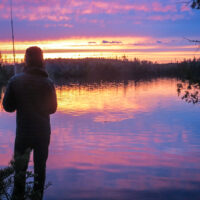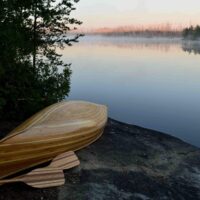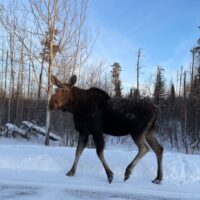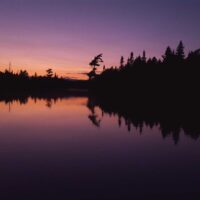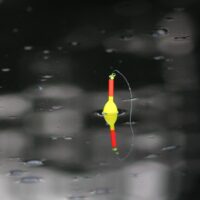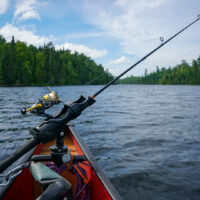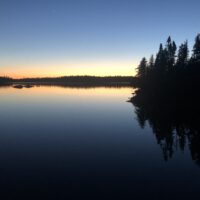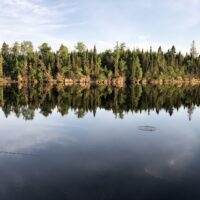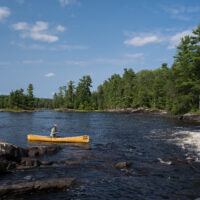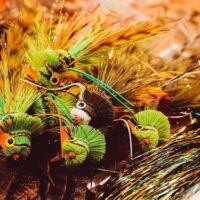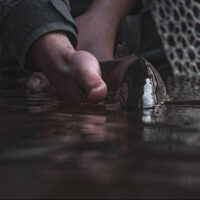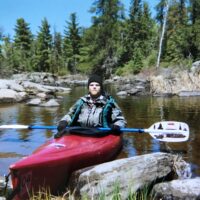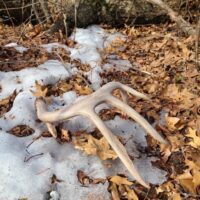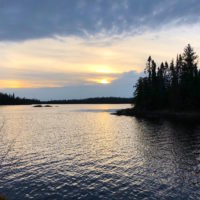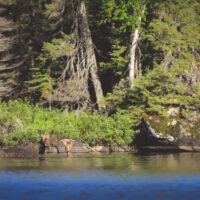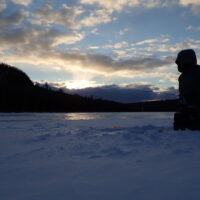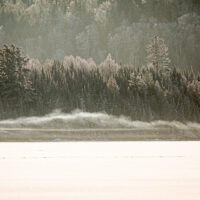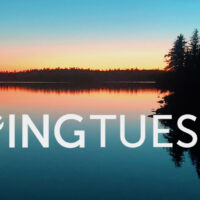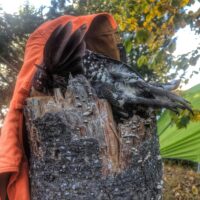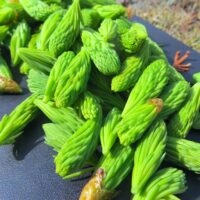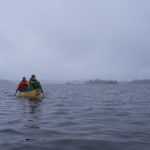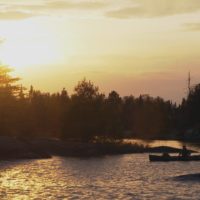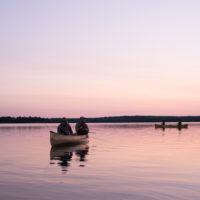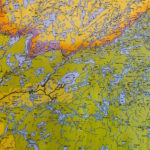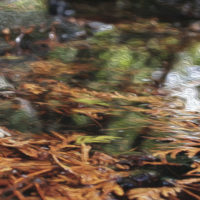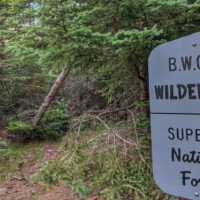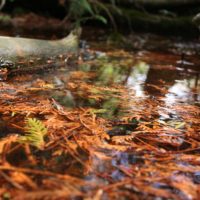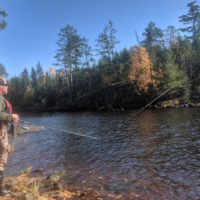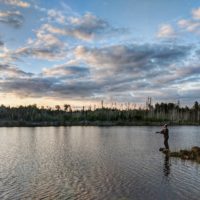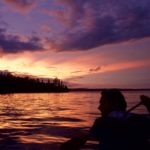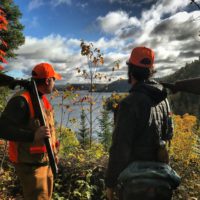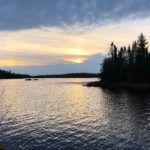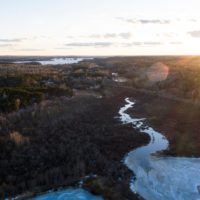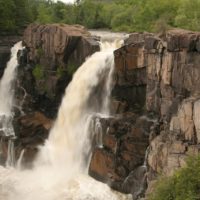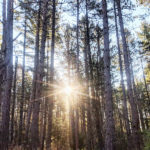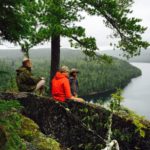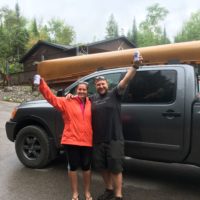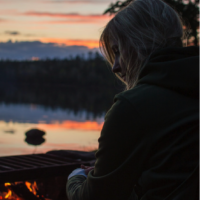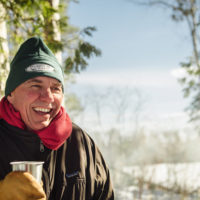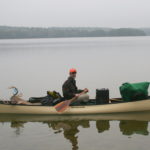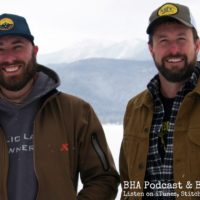A Winter Niche: Chasing Hard Water Monsters In The BWCA
February 15, 2021 3:45 pmby Jacob Bendel
The first time I ever set foot in the Boundary Waters was during the winter. I was ten years old and snowshoed in with a group of guys to fish lake trout. While I didn’t catch a trout that day, I definitely caught something. Maybe it was the serene beauty of the snow-laden forest or the powerful silence of the winter wilderness. How could a young kid not help but dream of one of those speckled beauties rocketing in to crush his bait?
Lake trout are such beautiful fish, and their color variations continue to amaze me. With backgrounds of dark grey to brown to olive to silver and spots varying from tiny specks to large irregular blotches; fins from muted brown to vibrant red and orange. Somehow, I ended up being the one that got hooked that day.
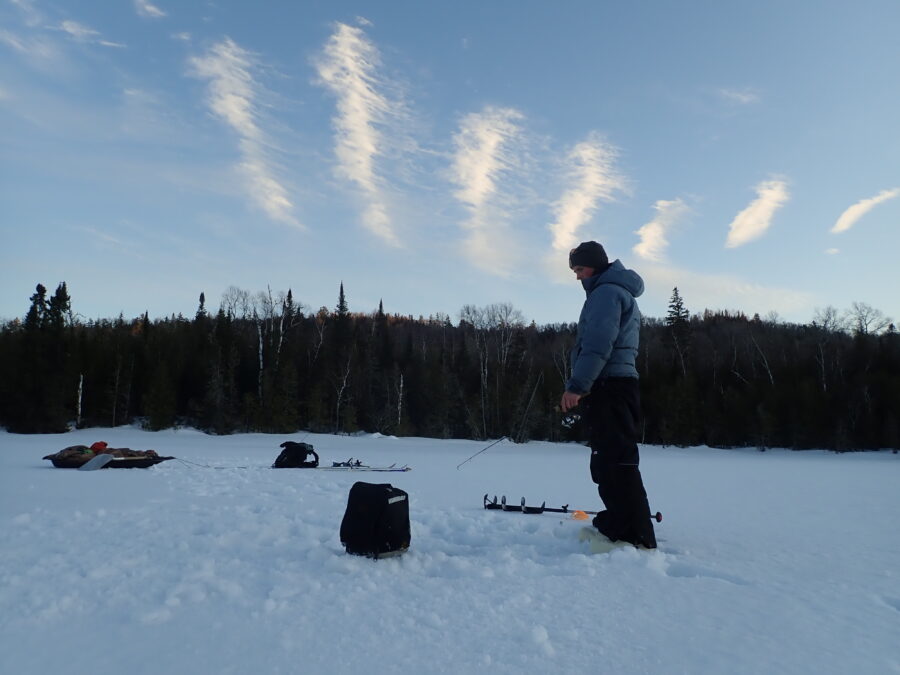
Fast forward to today, I don’t think twice about running up to the Boundary Waters for the weekend, any time of the year. It’s not uncommon for me to work away from home all week, get home Friday night, scramble some gear together, get up at 3:00 AM on Saturday to hit the road, and be skiing into the Wilderness at sunrise. All this in hopes of bending a rod on some of those spectacular lake trout.
I’ll admit I have an addiction to winter camping and lake trout fishing in the Boundary Waters, and more often than not, my trips are solo excursions. There is something special about being the only person on the lake for days at a time.
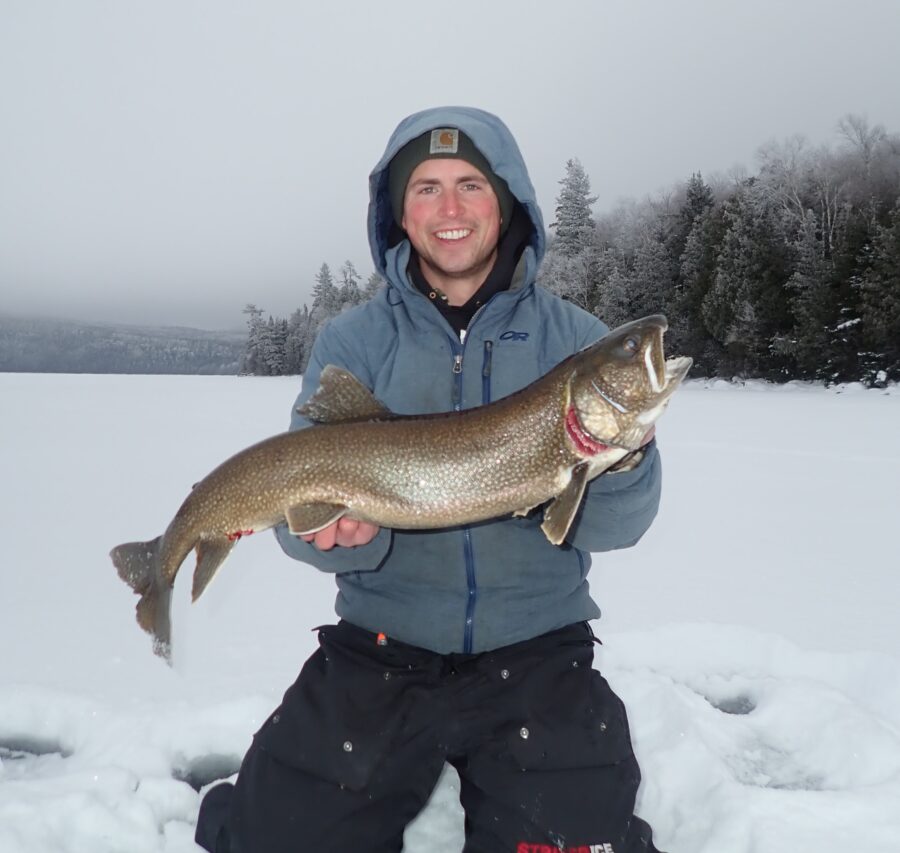
On the opening day of the trout season this year, I spent over eleven hours breaking trail into a lake by myself. Coming out two days later on my frozen-trail in six hours seemed like a cakewalk. That trip gifted me with one of the best days of trout fishing I’ve ever had. There’s nothing cozier than burying yourself in a sleeping bag after a day of crushing lake trout. It’s just me and the fish, interacting in this beautiful place.
In the winter, travel is so much slower and more laborious than paddling. In the open water months, I do a lot of exploring and try to reach new lakes. The hard water season is a different story, but I would like to think I’m much more ambitious than the average winter traveler. There are usually a few days each winter where I’m covering ten plus miles a day. I also try to fish at least one new lake each season.
For me, winter camping and chasing lakers go together. I find it so much more enjoyable to directly connect to the fish while jigging without the interference of waves, weights, or excessive line as encountered during open water fishing. Some years I even spend more time in the Boundary Waters on ice than I do open water.
After catching plenty of trout over the years, it’s only natural to want bigger ones. I decided to pursue larger fish the past few seasons, so now I prefer to fish lakes where I know I have a shot at a good-sized fish. My experience has given me invaluable information on the conditions and weather patterns that trout favor. I usually try to line the best conditions up with my trips to stack the odds in my favor. Last year was my most successful yet. I caught a handful of darned good fish and hooked into a couple of giants.
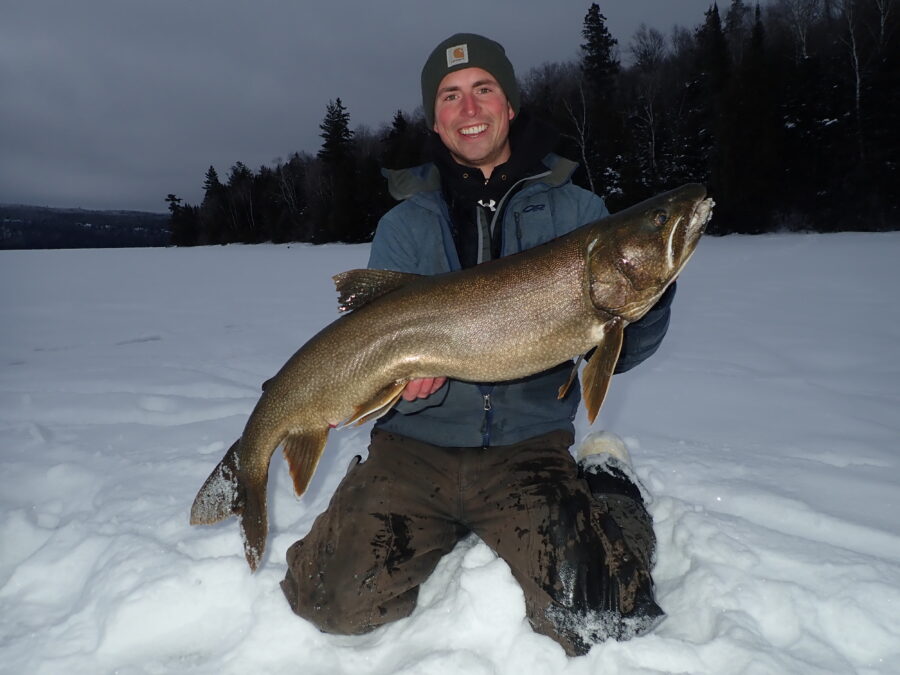
Last hard water season, I lost the biggest laker I had ever hooked. It would make long runs and then sit for several seconds, unmoveable with my rod doubled over. That fish was on another level than any BWCA trout I had ever hooked. After what seemed like an eternity, I began to make headway and get it near the hole. Right when my buddy and I were going to get a good like at it, the hook came out. I just smiled and walked away. I remember my friend saying, “I can’t believe how mature you just were about that.” Little did he know that I was heartbroken and left wondering how long it would take me to hook into a fish like that again.
A week and a half later, I found myself in the same situation during a solo trip. I wondered how in the heck I could be tied into another giant, but there I was. I saw this fish seven or eight times before eventually pinning it across the bottom of the hole. The icy water was never so inviting as when I plunged my arm down to grab that fish. It took some time to get her oriented right as there wasn’t much room to spare in that seven-inch hand-drilled hole.
I had myself a Boundary Waters beast of a lake trout. After snapping some quick photos, I was still in disbelief as I guided that massive forked tail down the hole. A victory fire was in order that evening, mainly to dry out the wet layers on my left arm.
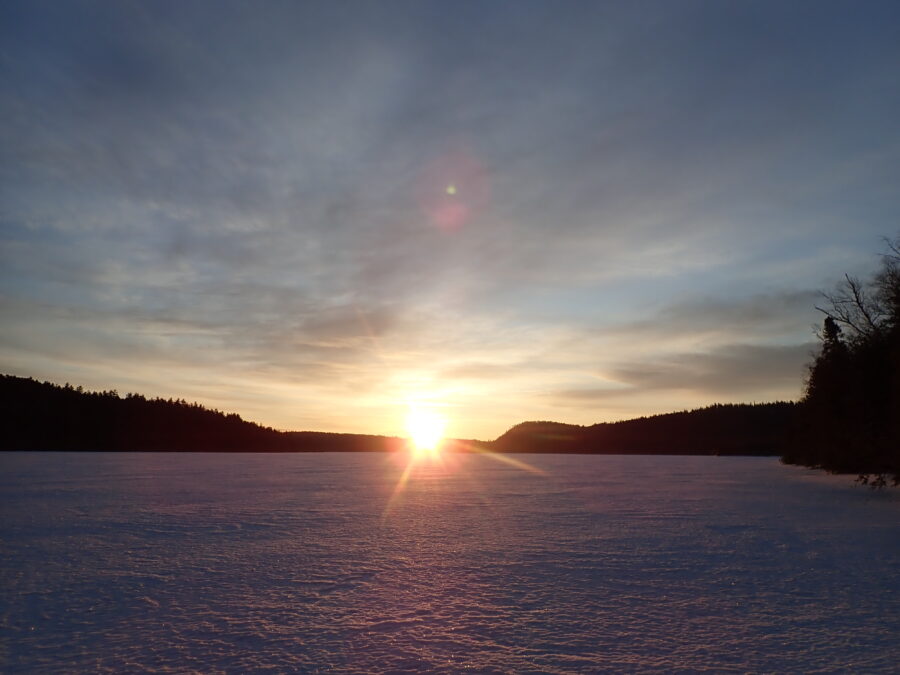
There’s a decent chance that the monster I caught was over twenty years old. I don’t think there are many beasts like that roaming the depths of the BWCA, but there’s at least a handful of Minnesota lakes with a history of producing trophies like it. I don’t know if I will ever be able to top that fish, but I’m sure going to try.
Many anglers keep the lake trout they catch for table fare. There’s no denying the deliciousness of a fatty lake trout, but I ask that you at least consider what you keep. Lake trout grow very slowly and live for a long time. Releasing larger fish is a good practice to follow. Besides, smaller fish provide a better dining experience and have fewer toxins built up in their flesh. I have a few lakes that I won’t even keep fish out of to help maintain the population. I also try to spread my take around, keeping only a fish or two out of a given lake each year.
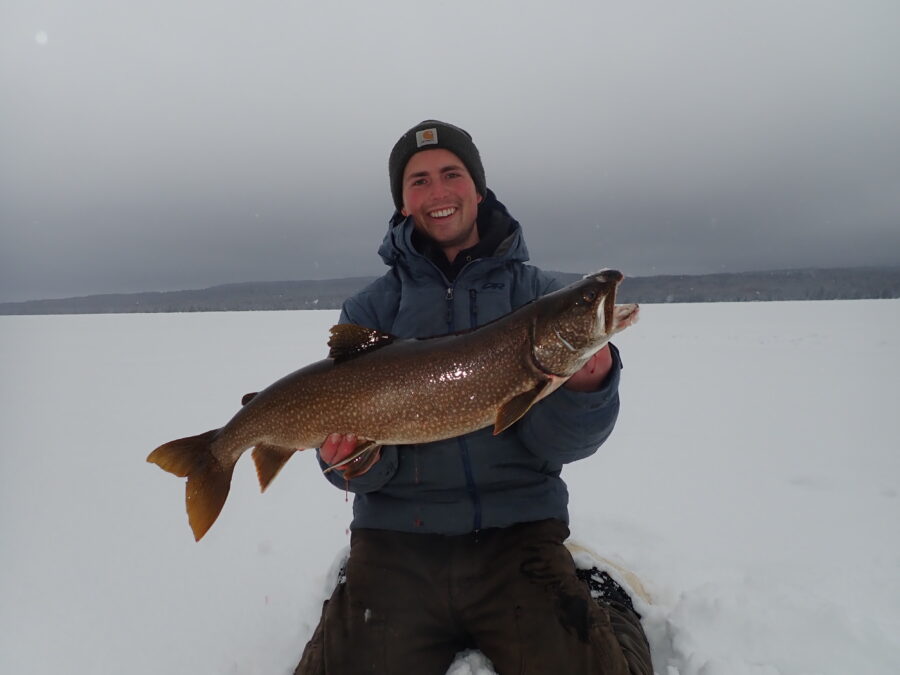
There’s no place I’d rather be right now than on a hard water excursion into the BWCA for lake trout. It’s my winter niche. Sometimes I wonder if my adventures will begin to dwindle as I get older. Somehow, I think not. I’m sure I’ll slow down and maybe even make some wiser decisions, but my love of type two fun and big wilderness lake trout will likely prevail.
I hope the monster I caught is still swimming, and maybe someday someone else will experience the same thrill that I did. There’s nothing else like it.
Tags: Boundary Waters, boundary waters ice fishing, boundary waters lake trout, Boundary Waters Trout Fishing, BWCA, BWCA ice fishing, BWCA Winter Camping, ice fishing, lake trout, trout, Trout Fishing, winter camping
